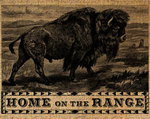7 Ways Marketers Can Use Mobile to Tap Into People’s ‘Digital Home on the Range’
Posted in: UncategorizedIn just under a decade, mobile devices have morphed from a handy tool that allows people to make phone calls on the go into a users’ primary communication channel and ubiquitous online connection to friends, family, business and entertainment. The rapidly changing role mobile devices play in our lives is evident from a mobile device users’ utter panic if their phone is misplaced or stolen: The loss creates the same physiological and psychological symptoms once reserved for a traumatic event like a home burglary — a sense of disorientation and alienation from what they hold dear as well as profound separation anxiety.
These feelings arise because the mobile phone today is much more than a mere handset: It’s a portal to the digital world we increasingly inhabit. We use it to keep up with loved ones on social platforms, find our way in the real world, catch up on the latest news, conduct personal business like banking and handle production tasks while we make a living.
The smartphone is, in a very real sense, our home on the range, our digital home. And with this change in the way users relate to their mobile devices, this increased dependence, marketers and sales professionals must evolve the way they approach customers to effectively reach out to them in their mobile abodes.
As marketers and sales professionals understand how personal mobile devices have become, they will do well to think about what worked for our grandparents’ generation in the form of the door-to-door salesmen. Before the digital age, successful door-to-door salesmen knew that to make a sale, they had to engender trust in order to gain access to a prospective customer’s private home. Theses yesteryear sales professionals followed commonsense guidelines to gain access to the homeowner and an opportunity to make a sale.
Present a neat appearance: Successful salesmen were groomed and dressed appropriately for the neighborhoods in which they worked.
Use a confident approach: Salesmen were deliberate and confident when they knocked at the door — finding a balance between being too aggressive or too meek.
Make a positive first impression: Salesmen knew the homeowner would peek at them through a curtain or keyhole and prepared a positive, non-threatening look.
Greet customers in their own language: Salesmen studied their target customers and greeted them in a manner and language that was familiar to the listener.
Anticipate objections and create trust: Salesmen created pitches to allay concerns and worked to build trust by addressing pain points and managing expectations.
Involve customers in the solution and tell the truth: Salesmen who achieved long-term success convinced customers that they needed the product with a true account of the benefits.
Follow up and ensure satisfaction: Good salesmen knew happy customers were their most effective marketing channel and that the customer was always the final arbiter of success.
With just a few adjustments in the wording, these same principles apply today when creating mobile marketing strategies. The medium is different: Instead of approaching the door of a residence, today’s mobile marketers are using apps and mobile sites to deliver their pitch directly to the portal of the user’s digital home.
But just as successful salesmen in a bygone era took care to convey honesty by projecting an appropriate and confident image, speaking in the same vernacular as customers, creating a pitch that appealed to pain points while allaying fears and involving the customer in developing the solution, successful mobile marketers should strive to make an equally positive impression in pixels using these very same tactics. Today, word-of-mouth sales might originate from a retweet instead of a back-fence chat with a neighbor, but the revenue generated is just as valuable.
The key takeaway for businesses today is that mobile devices now function as a portable doorway to a customer’s digital home. Successful sales professionals will embrace modern tools, but that doesn’t mean they should leave tried-and-true sales tactics and customer focus behind; they simply evolve these principles onto new platforms.
By understanding the psychology of mobile, how personal and important the devices have become to their users, today’s successful sales professionals can gain entry to prospective customers’ home on the range, their digital home, with the latest technology while generating revenue the old fashioned way — through honest iteration and customer satisfaction.
James Ramsey is the CEO of Fiddlefly, a digital creative agency.


Post a Comment